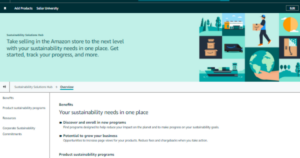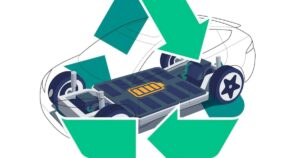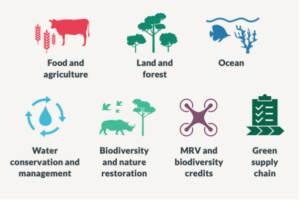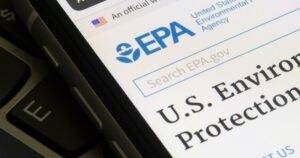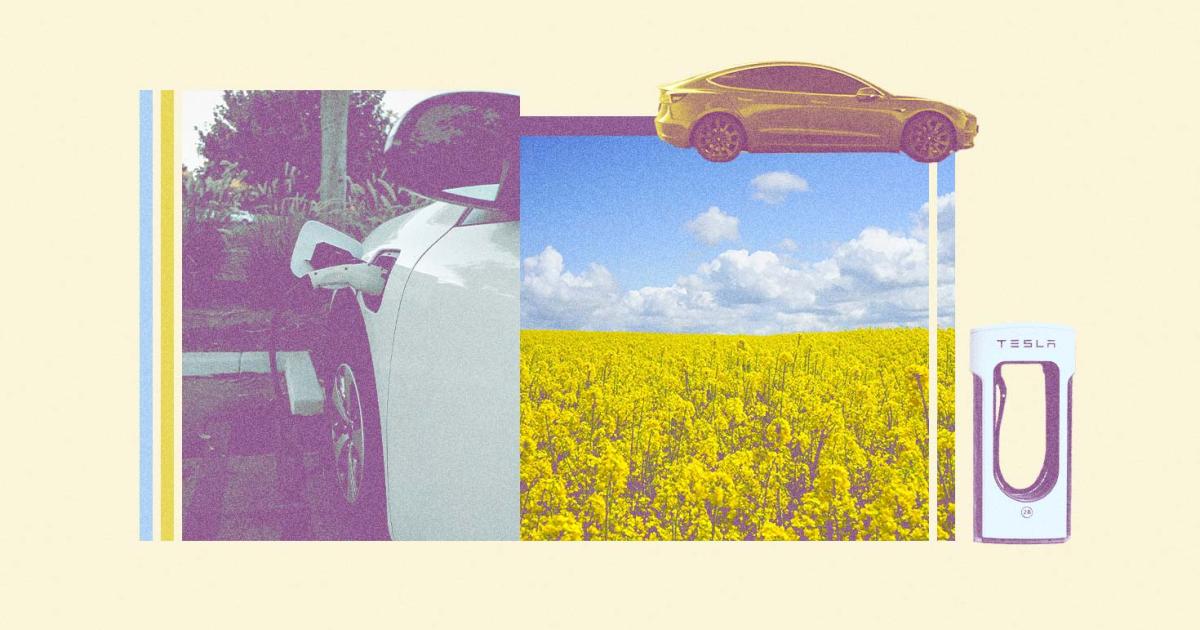
"It’s a two-way street," said Maaz Haider, manager of electric truck transition at EDF during GreenBiz’s Electrify 23 conference Thursday. "You're reaching out to your value chain, but you're also keeping doors of communication open for them to reach out to you."
PepsiCo and eBay are two companies, with very different business models, that are both employing that tactic to get a handle on their Scope 3 transportation emissions because they engage third parties to transport their inventory.
Kristen Banks, sustainability senior manager for PepsiCo, said that in North America closer to 20 percent of Pepsi’s footprint is from transport. For eBay, a company that doesn’t actually make any products, transportation makes up over 85 percent of its total Scope 3 emissions, according to Melissa Bauer, ESG strategy lead at the e-commerce reseller.
The companies engaging with vendors, suppliers and (in eBay’s case) even customers is the only way these companies can start to decarbonize this aspect of the business. These organizations are helping to encourage fleets to reduce empty miles driven, switching to renewable diesel, converting to electric fleets and improving efficiency overall.
Here are three ways these two global companies are engaging with suppliers to decarbonize their contracted third-party fleets.
1. Getting granular on the data
One of the biggest challenges for decarbonization when working with vendors is getting access to the right and interoperable data.
The elusive data that Banks calls "the gold standard" would be fuel type, quantity used by the carrier and, if it’s electric, what grid it is pulling from. But carriers don’t want to share that data because it is commercially sensitive. So in its absence, PepsiCo and eBay are having to use standardized methodologies.
According to Bauer, eBay has an entire team that works directly with carriers to collect and interpret billions of data points. And it has a leg up because as an e-commerce platform where every single package’s size and weight, shipment method and locations are tracked digitally. This makes it easier to track emissions than for other retailers such as Pepsi which has multiple distributor centers. But it’s still a massive lift to get all that data to talk to one another.
"All of our different carriers aren't using the same methodology," she said. "The Postal Service does not use the same calculation as FedEx. And UPS does not use the same as DHL."
2. Creating direct partnerships to tackle decarbonization together
In 2023, PepsiCo teamed up with Schneider National; for the first third-party shipment on an electric vehicle for the company. According to the press release shipping on the EV will result in a 70 percent reduction of emissions this year from the initial routes.
"It was relatively simple in some ways," Banks said. "A direct partnership with a carrier. Two partners are involved, and we come up with some solution that we're both working towards together."
According to Banks, Schnieder got its first 92 electric vehicles in Southern California and PepsiCo is shipping its products on those fleets. According to Haider, having two global companies working on the same issue opens up a lot of capital and resources to move the electric transition forward.
3. Enabling electrification as a service
The other big challenge for electrification is the upfront capital and long timelines needed for fleets to make the change. So a second model PepsiCo is exploring is engaging electrification-as-a-service business.
According to Banks, PepsiCo contracts with these electrification-as-a-service businesses, which provide the electric trucks and charging infrastructure; then that business goes out to subcontract with drivers and carriers to move Pepsi’s inventory.
We see electrification of service as an alternative route to where we can electrify more of our footprints.
"It’s fantastic when carriers go out and get the trucks themselves and install the charging infrastructure," she said. "But especially for small- or medium-sized carriers, that's not always going to be possible."
PepsiCo is already doing this in the U.K. with a company called Einride. In July, Pepsi started using two electric trucks from Einride between the two factories in the Midlands as a pilot of the project.
"A lot of carriers don't have trucks just sitting around today and don’t have the expertise around installing charging infrastructure," Banks said. "This helps to speed up that timeline. We also do see this as a more scalable model."
Correction: While PepsiCo also has a partnership with Schneider Electric, this story should have been referring to a partnership with Schneider National. PepsiCo does own its own fleet as well as engaging third-party shippers. Other aspects of the story were updated with clarifying information.
- SEO Powered Content & PR Distribution. Get Amplified Today.
- PlatoData.Network Vertical Generative Ai. Empower Yourself. Access Here.
- PlatoAiStream. Web3 Intelligence. Knowledge Amplified. Access Here.
- PlatoESG. Automotive / EVs, Carbon, CleanTech, Energy, Environment, Solar, Waste Management. Access Here.
- PlatoHealth. Biotech and Clinical Trials Intelligence. Access Here.
- ChartPrime. Elevate your Trading Game with ChartPrime. Access Here.
- BlockOffsets. Modernizing Environmental Offset Ownership. Access Here.
- Source: https://www.greenbiz.com/article/3-ways-ebay-pepsi-are-addressing-scope-3-transport-emissions
- :has
- :is
- :not
- :where
- $UP
- 20
- 2023
- 23
- 70
- a
- access
- According
- actually
- addressing
- All
- already
- also
- alternative
- always
- america
- an
- and
- Another
- any
- ARE
- around
- article
- AS
- aspect
- aspects
- At
- Banks
- BE
- because
- been
- between
- Big
- Biggest
- billions
- both
- business
- businesses
- but
- by
- california
- called
- Calls
- CAN
- capital
- carriers
- case
- Catch
- Centers
- chain
- challenge
- challenges
- change
- charging
- closer
- CO
- collect
- come
- commercially
- Communication
- Companies
- company
- Conference
- contracts
- converting
- coverage
- Creating
- Customers
- data
- data points
- decarbonization
- dhl
- diesel
- different
- digitally
- direct
- directly
- distributor
- do
- does
- Doesn’t
- don
- Dont
- doors
- driven
- drivers
- during
- e-commerce
- easier
- eBay
- EDF
- efficiency
- Electric
- electric vehicle
- electric vehicles
- Emissions
- enabling
- encourage
- engage
- engaging
- Entire
- ESG
- especially
- Ether (ETH)
- EV
- Even
- Every
- expertise
- Exploring
- factories
- fantastic
- fedex
- First
- FLEET
- Footprint
- For
- Forward
- from
- Fuel
- get
- getting
- Global
- Go
- Goes
- going
- Gold
- Gold Standard
- Grid
- Haider
- handle
- Have
- having
- helping
- helps
- HTTPS
- if
- improving
- in
- information
- Infrastructure
- initial
- install
- installing
- interoperable
- inventory
- involved
- issue
- IT
- ITS
- jpg
- July
- just
- keeping
- lead
- locations
- Long
- Lot
- make
- MAKES
- manager
- massive
- method
- methodologies
- Methodology
- model
- models
- more
- move
- multiple
- National
- needed
- node
- North
- north america
- of
- on
- ONE
- only
- open
- opens
- or
- organizations
- Other
- our
- out
- over
- overall
- own
- parties
- partners
- Partnership
- partnerships
- pepsico
- percent
- pilot
- platform
- plato
- Plato Data Intelligence
- PlatoData
- points
- possible
- postal
- press
- Press Release
- Products
- project
- provide
- pulling
- quantity
- RE
- reach
- reaching
- reduce
- reduction
- relatively
- release
- Renewable
- Resources
- result
- retailers
- right
- Route
- routes
- s
- Said
- same
- scalable
- Schneider Electric
- scope
- Second
- see
- senior
- sensitive
- service
- Share
- she
- Shipping
- should
- Simple
- single
- Sitting
- Size
- So
- solution
- some
- Southern
- speed
- standard
- start
- Still
- Story
- Strategy
- street
- such
- suppliers
- Sustainability
- T
- tackle
- Talk
- team
- than
- that
- The
- their
- Them
- themselves
- then
- These
- they
- Third
- third parties
- third-party
- this
- this year
- those
- three
- thursday
- timeline
- timelines
- to
- today
- together
- Total
- towards
- track
- transition
- transport
- transportation
- truck
- Trucks
- two
- type
- U.K.
- updated
- UPS
- use
- used
- using
- value
- vehicle
- Vehicles
- vendors
- very
- want
- was
- Way..
- ways
- we
- weight
- WELL
- were
- What
- when
- which
- while
- will
- with
- working
- works
- would
- year
- you
- Your
- zephyrnet



